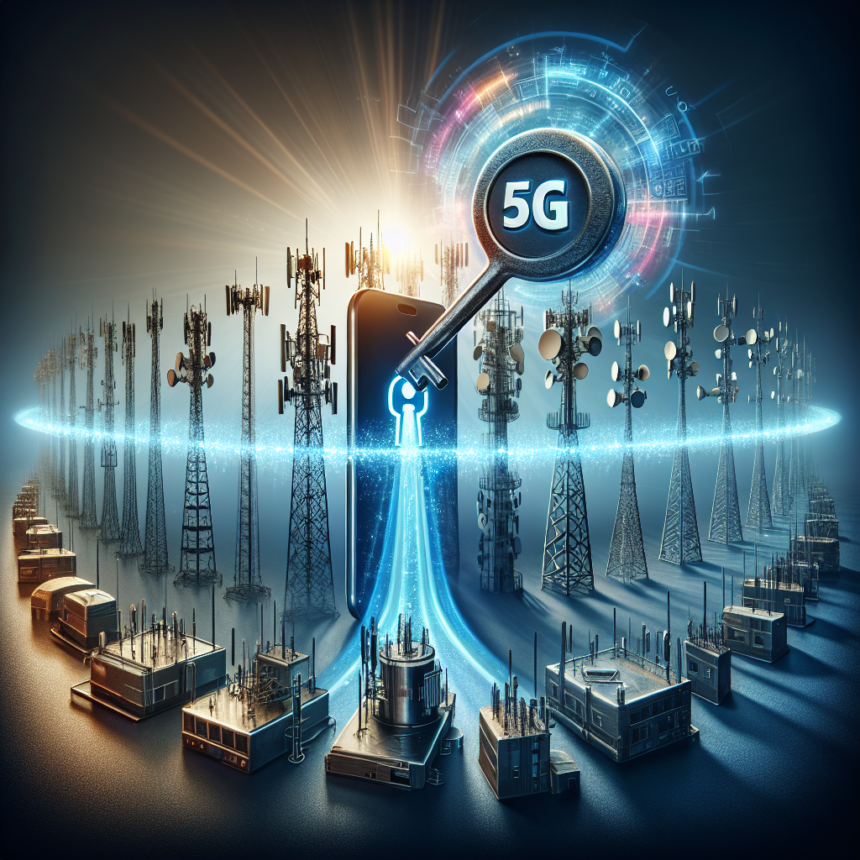The advent of 5G technology is poised to revolutionize our digital landscape, promising advancements in networks, devices, and communication that could transform everyday life. As we transition from 4G to 5G, understanding the underlying technology, benefits, applications, and challenges becomes crucial for businesses, consumers, and policymakers alike. Here’s a comprehensive guide to 5G technology, exploring its significance and potential impact on our future.
What is 5G?
Fifth-generation wireless technology, commonly known as 5G, is the latest mobile network standard designed to significantly enhance data speed, reduce latency, and provide connectivity for an unprecedented number of devices. Unlike its predecessor 4G, which primarily focused on improving mobile broadband speeds, 5G encompasses a broader range of applications. It supports numerous technologies, including the Internet of Things (IoT), autonomous vehicles, augmented reality (AR), and smart cities, among others.
Key Features of 5G
-
Increased Speed and Capacity: 5G is expected to provide peak download speeds of up to 10 Gbps, significantly faster than 4G speeds that typically max out around 1 Gbps. This increase in speed translates to quicker downloads, seamless streaming, and enhanced user experiences across various applications.
-
Reduced Latency: Latency, measured in milliseconds (ms), refers to the delay before data transfer begins following an instruction. 5G dramatically reduces latency to as low as 1 ms, making real-time applications such as remote surgery, gaming, and critical communication much more viable.
-
Massive Connectivity: 5G networks can connect up to 1 million devices per square kilometer. This capability is essential for the IoT ecosystem, enabling billions of devices, such as sensors and smart appliances, to connect and communicate efficiently.
-
Enhanced Reliability: 5G offers improved reliability, which is crucial for applications like autonomous driving and industrial automation, where connection drops could lead to dangerous outcomes.
- Energy Efficiency: 5G networks are designed to be more energy-efficient, requiring less power to transmit data, which contributes to sustainability goals and reduces operational costs for carriers.
Applications of 5G Technology
The potential applications of 5G technology are vast and varied. Here are some key areas where 5G could make a significant impact:
-
Smart Cities: 5G can facilitate the operation of smart grids, traffic management systems, and public safety networks, allowing cities to use resources more efficiently and enhance quality of life.
-
Autonomous Vehicles: Rapid and reliable data transmission is necessary for self-driving cars to communicate with each other and their environment, ensuring safety and efficiency.
-
Healthcare Innovations: Telemedicine will benefit from 5G’s low latency, allowing healthcare providers to conduct remote diagnoses and surgeries with real-time data transfer.
-
Industrial Automation: 5G can drive the adoption of smart factories, enabling real-time monitoring, predictive maintenance, and remote control of machinery.
- Virtual and Augmented Reality: The advanced bandwidth and low latency of 5G will enhance virtual and augmented reality experiences, making them more interactive and responsive.
Challenges and Concerns
While the benefits of 5G are extensive, some challenges and concerns must be addressed, including:
-
Infrastructure Costs: Deploying 5G requires substantial investment in infrastructure and technology. Upgrading existing networks and building new towers can be costly and time-consuming.
-
Security Issues: Increased connectivity raises security concerns, particularly concerning data privacy and protecting critical infrastructure from cyber threats.
-
Regulatory Hurdles: Governments will need to develop policies and regulations governing 5G deployment, spectrum allocation, and security measures to ensure an equitable rollout.
- Health Concerns: Some individuals express concerns about potential health risks associated with increased exposure to radiofrequency radiation emitted by 5G networks.
Conclusion
5G technology is not just an upgrade to existing networks; it represents a leap into a future where digital connectivity transforms industries, economies, and everyday living. By unlocking the potential of faster speeds, lower latency, and massive connectivity, 5G will enable innovations that could reshape our world. As we stand on the threshold of this exciting new era, understanding 5G technology and its implications will be critical for leveraging its full potential.
FAQs
1. What is the primary difference between 4G and 5G?
- The primary difference lies in speed and latency, with 5G offering significantly faster data rates and much lower latency compared to 4G.
2. How will 5G impact everyday life?
- 5G will enhance mobile internet experiences, enable smart home devices, improve telemedicine, and foster innovations in transportation, industrial automation, and more.
3. Are there any health risks associated with 5G?
- Current research largely indicates that 5G technology is safe. However, ongoing studies are critical for monitoring any potential health impacts.
4. When will 5G be widely available?
- While 5G deployment is already in progress in many urban areas, widespread availability is expected to take a few years, with infrastructure development extending into rural areas as well.
5. What role does 5G play in the growth of the IoT?
- 5G’s capacity to connect millions of devices with low latency makes it a vital enabler of the IoT, supporting diverse applications from smart appliances to industrial sensors.











